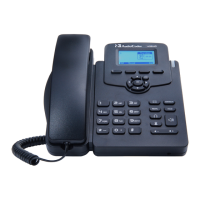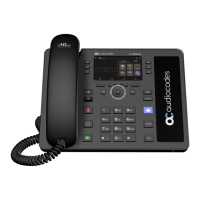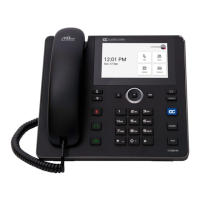Release Notes 2. Version 2.0.13B
Version 2.0.13B 13 400HD Series IP Phones for Skype for Business
2.3 Known Constraints in Version 2.0.13B
Version 2.0.13B includes the following known constraints:
Boss Admin:
• When the Boss configures an Admin user, the Admin's username is shown instead of the
Admin displayed name.
• When the Boss performs a handoff to Admin, Admin cannot transfer the call back to the Boss
with a single step ‘Handoff’ softkey. Call Transfer is possible using the Transfer options.
• The list in the Dialed Calls screen, shown after pressing the REDIAL key, is incorrect after a
call to Boss is made and the call is answered by Admin. When the caller presses REDIAL,
they see Admin's phone number instead of Boss'.
• Response Group - A call initiated by Admin on Boss' behalf to Response Group cannot be
picked up by Boss.
• Response Group - Incoming call from Admin (on behalf of Boss) appears in Response Group
agent's phone LCD as a regular call and not as a Response Group call.
• If an Admin with two Bosses answers two incoming calls (one for each Boss), the second call
can't be seen by Boss.
BToE:
• BToE does not function if PC users are switched without logging off first.
• Call Park can be performed from the phone, not from the Skype for Business client.
• Audio Primary Device:
Switching Audio Primary Device during a call from the Skype for Business PC client to the
phone does not function. This is a limitation of Skype for Business-compatible IP phones.
(Audio Primary Device can be switched from the phone to the PC client.)
During an incoming Skype for Business call, the Primary Device cannot be changed in
the Skype for Business Conversation window. It can be changed when making outgoing
calls, and for incoming PSTN calls.
• Video Calls:
Outgoing and incoming video calls are possible using the Lync PC client with the following
limitations:
When a paired user has an active video call (e.g., answered from the Skype for Business
PC Client), attempting to answer another call (either from the Lync PC client or with the
phone) disconnects the video call.
An audio call cannot switch to video using the Lync PC client's Start My Video option.
Users trying this option (either local or remote parties) receive the notification message
"Call was not completed or has ended" and the call may be disconnected.
• A paired user cannot merge two calls into a conference call using the Lync PC client's Merge
Calls option.
• After installing BToE, Lync client must be used to make conference calls as the IP phone no
longer displays the Conf softkey.
• When a paired user disconnects a second call that they answered or made, and puts a remote
conference on Hold, there's no voice when the user resumes with the remote conference.
Sign-in using Extension and PIN Code cannot be completed when the user signs in as an external
user, even if the phone was already registered internally. The result on the phone may even be a
loop of sign-in retries. Users must note that based on Microsoft security recommendations, a
remote/external user (Skype for Business client or phone) should use user and password
credentials to sign in, rather than Extension and PIN Code.
Phones participating in a local conference (the originator and the remote parties, assuming they
have AudioCodes 400HD Series IP Phones) cannot perform Blind Transfer.
The Web interface displays some screens that are inapplicable to Skype for Business.
Call Log information is saved to the phone file system once every 24 hours.

